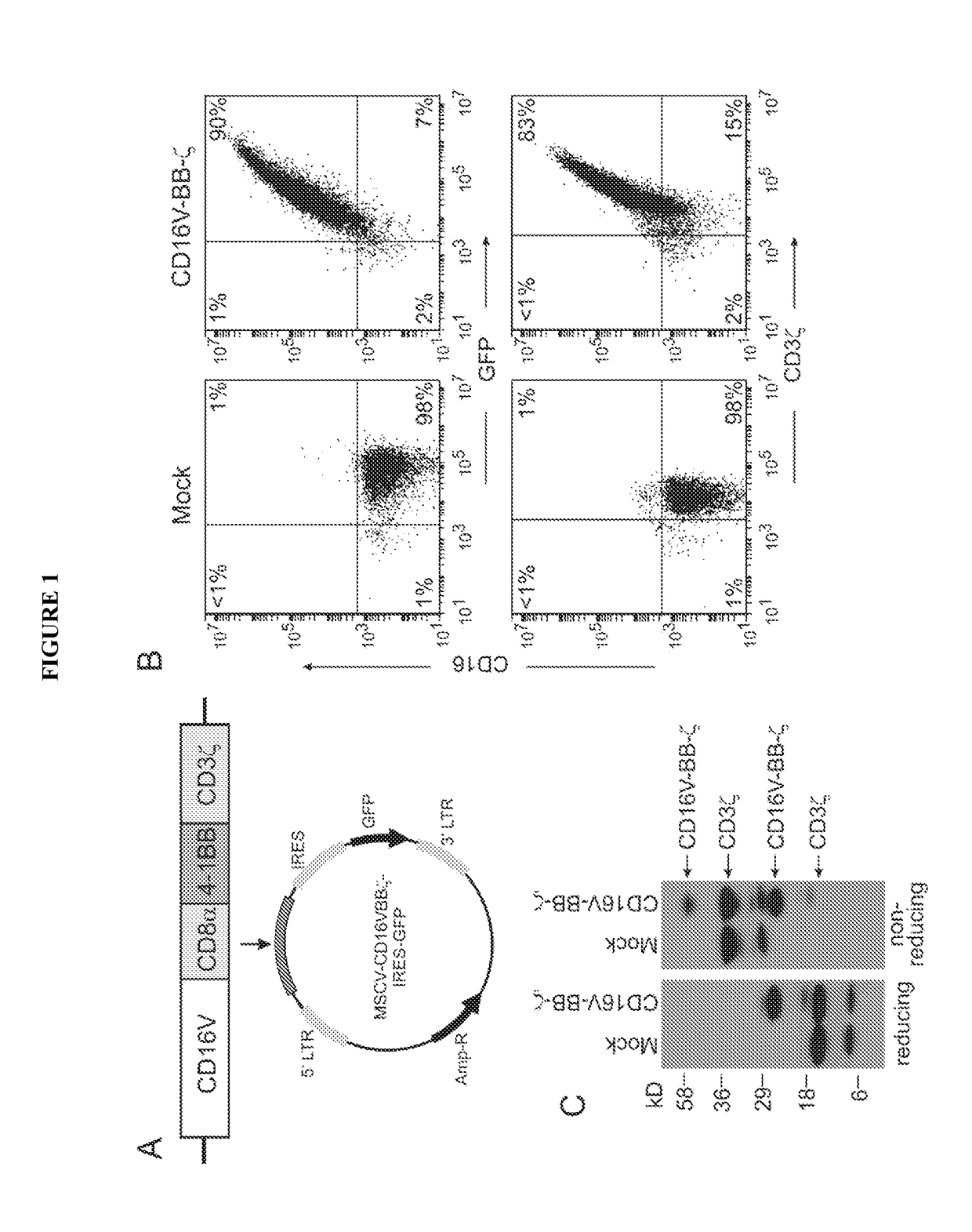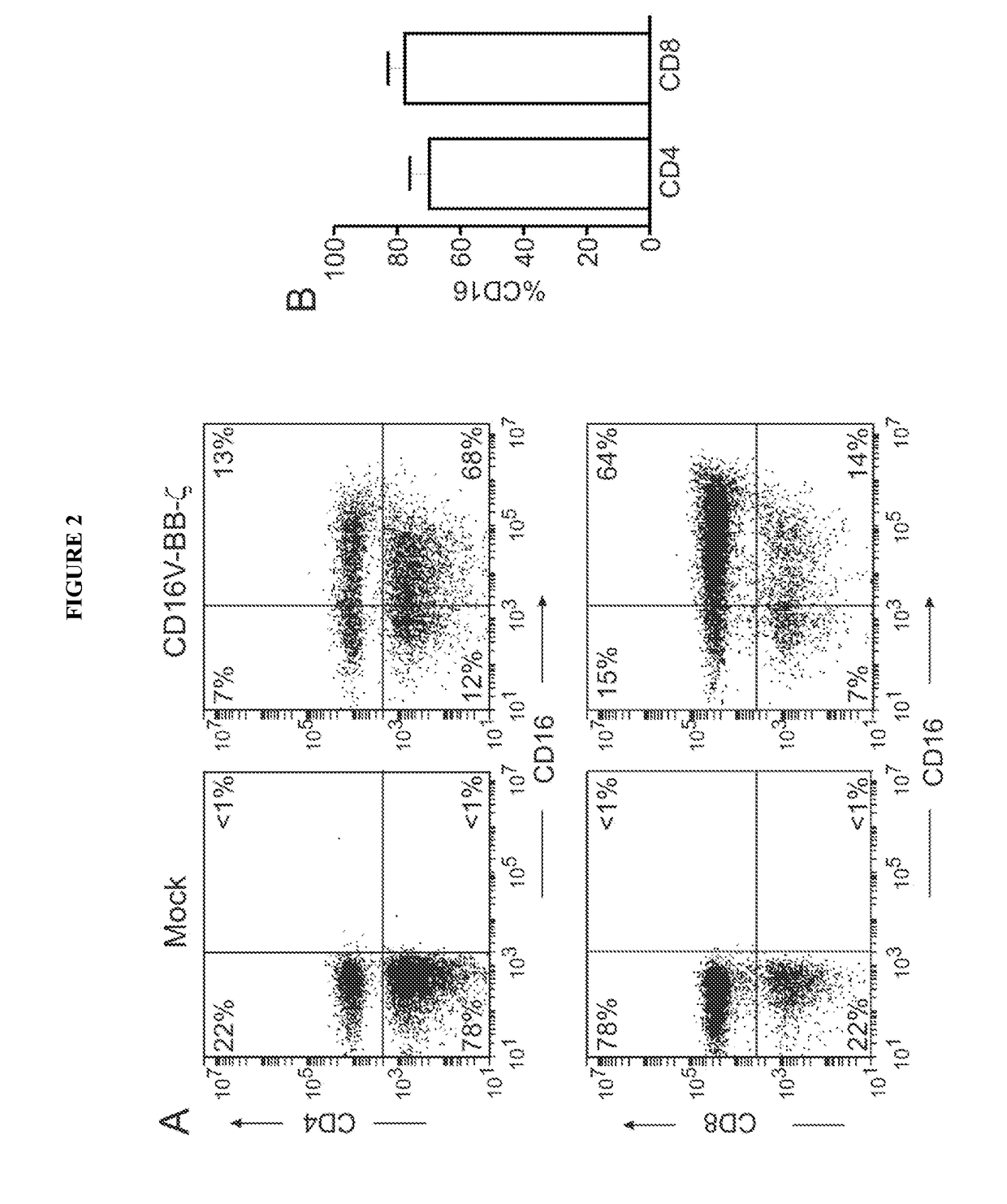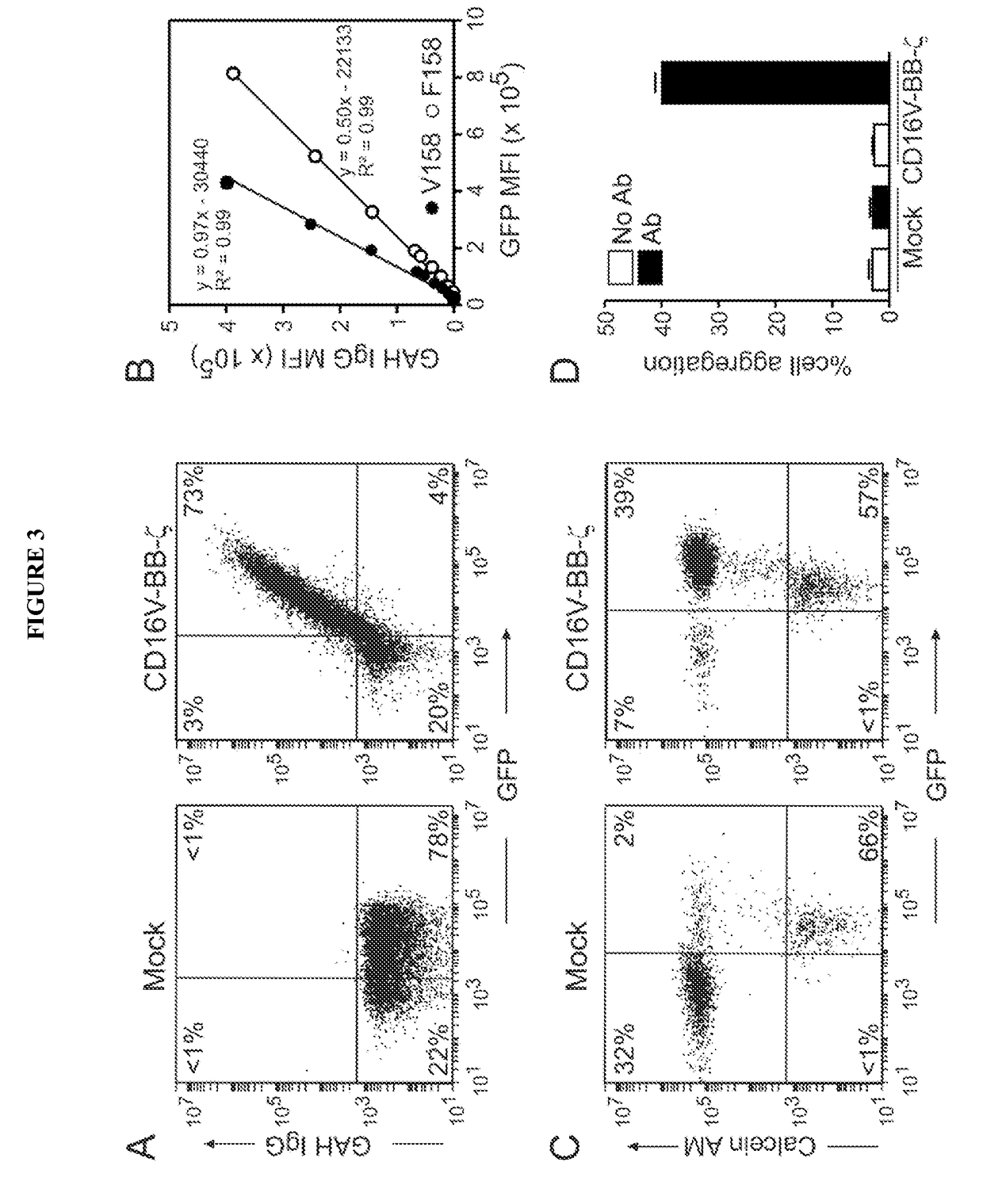Chimeric receptors and uses thereof in immune therapy
a technology of chimeric receptors and immune therapy, applied in the field of chimeric receptors, can solve the problems of cytotoxicity triggers, t cell activation, etc., and achieve the effect of enhancing adcc activity and enhancing immune therapy efficacy
- Summary
- Abstract
- Description
- Claims
- Application Information
AI Technical Summary
Benefits of technology
Problems solved by technology
Method used
Image
Examples
example 1
T Lymphocytes Expressing a CD16 Signaling Receptor Exert Antibody Dependent Cancer Cell Killing
Materials and Methods
Cells
[0172]The human B-lineage lymphoma cell lines Daudi and Ramos, the T-cell acute lymphoblastic leukemia cell line Jurkat, and the neuroblastoma cell lines CHLA-255, NB1691 and SK-N-SH were available at St. Jude Children's Research Hospital. The breast carcinoma cell lines MCF-7 (ATCC HTB-22) and SK-BR-3 (ATCC HTB-30), and the osteosarcoma cell line U-2 OS (ATCC HTB-96) were obtained from the American Type Culture Collection (ATCC; Rockville, MD); the gastric carcinoma cell line MKN7 was from National Institute of Biomedical Innovation (Osaka, Japan). Daudi, CHLA-255, NB1691, SK-N-SH, SK-BR-3, MCF-7, U-2 OS and MKN7 were also transduced with a murine stem cell virus (MSCV)-internal ribosome entry site (IRES)-green fluorescent protein (GFP) retroviral vector containing the firefly luciferase gene.34 Transduced cells were selected for their expression of GFP with a FA...
example 2
Construction of Various Chimeric Receptors
[0206]Nucleic acid sequences encoding chimeric receptors SEQ ID NO: 1, SEQ ID NO: 2, SEQ ID NO: 3, SEQ ID NO: 4, SEQ ID NO: 5, SEQ ID NO: 6, SEQ ID NO: 7, SEQ ID NO: 8, SEQ ID NO: 9, SEQ ID NO: 10, SEQ ID NO: 11, and SEQ ID NO: 14 were cloned into the HindIII and Xbal sites of vector pVAX1. The DNA vectors were linearized by digestion with restriction endonuclease XbaI and transcribed into RNA with T7 RNA polymerase. The RNA was subsequently enzymatically capped at its 5′-end with ScriptCap Capping Enzyme and ScriptCap 2′-O-Methyltransferase from Cellscript to give a Cap 1 structure and then poly-adenylated at its 3′-end with poly-A polymerase. The resulting mRNA was electroporated into Jurkat cells using an Invitrogen Neon electroporation system and grown in RPMI-1640 media with 10% fetal bovine serum at 37° C. for 6 hr.
[0207]Electroporated cells in media were then incubated with the CD20-specific antibody Rituxan (10 μg / mL) at 37° C. for 3...
example 3
Cells Expressing Chimeric Receptors Display T cell Activation Markers
[0210]Jurkat cells expressing the chimeric receptors disclosed in Example 2 above were evaluated for activity by monitoring for the presence of the cell-surface activity markers CD25 and CD69. For these experiments, Jurkat cells were electroporated without mRNA (mock) or with mRNA encoding the chimeric receptor constructs described in Example 2 above, using an Invitrogen Neon electroporation system and grown in RPMI-1640 media with 10% FBS at 37° C. for 8-9 hr. Cells were harvested, washed with RPMI-1640 media with 10% fetal bovine serum, 50 U / mL penicillin, and 50 μg / mL streptomycin. These cells were mixed at a one to one ratio with Daudi target cells, which have cell-surface-expressed CD20, that had been fixed with Streck's cell preservative, and the CD20-specific antibody Rituxan (10 μg / mL). This mixture was incubated at 37° C. for 18-20 hr in RPMI-1640 media with 10% fetal bovine serum, 50 U / mL penicillin, and ...
PUM
| Property | Measurement | Unit |
|---|---|---|
| dissociation constant | aaaaa | aaaaa |
| dissociation constant | aaaaa | aaaaa |
| dissociation constant | aaaaa | aaaaa |
Abstract
Description
Claims
Application Information
 Login to View More
Login to View More - R&D
- Intellectual Property
- Life Sciences
- Materials
- Tech Scout
- Unparalleled Data Quality
- Higher Quality Content
- 60% Fewer Hallucinations
Browse by: Latest US Patents, China's latest patents, Technical Efficacy Thesaurus, Application Domain, Technology Topic, Popular Technical Reports.
© 2025 PatSnap. All rights reserved.Legal|Privacy policy|Modern Slavery Act Transparency Statement|Sitemap|About US| Contact US: help@patsnap.com



